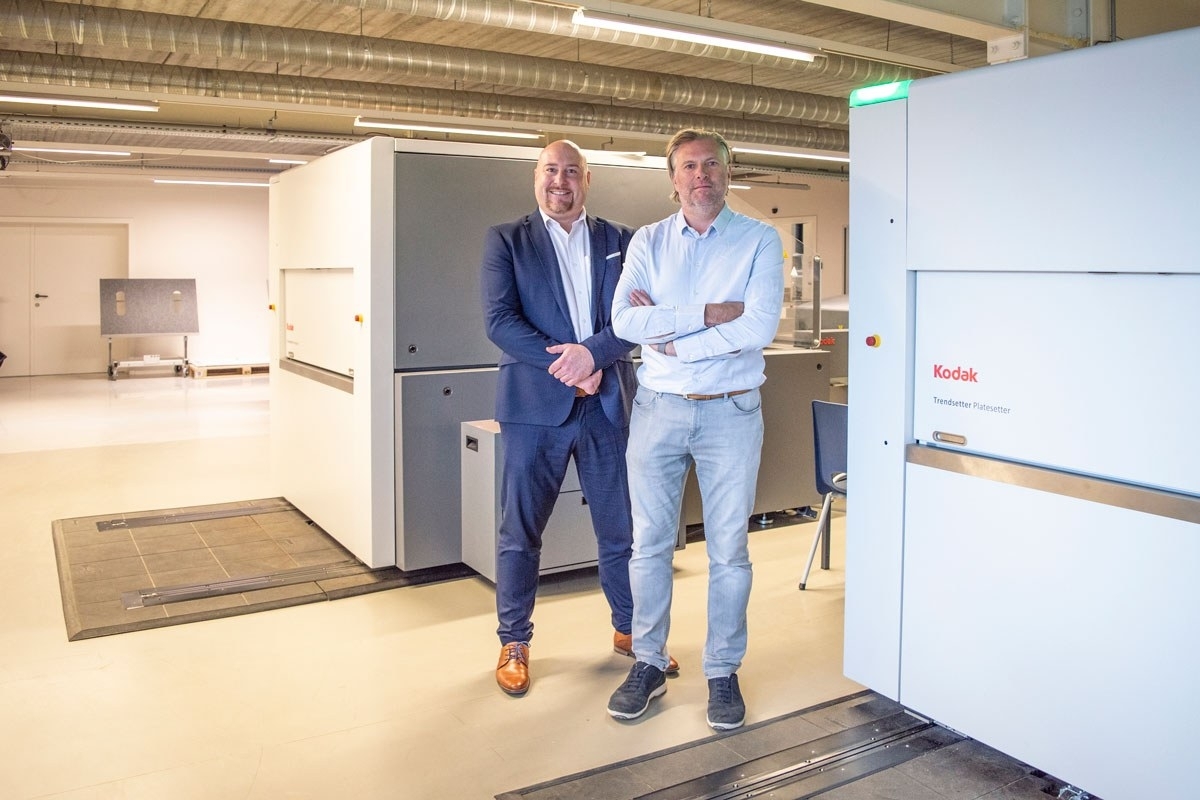Antilope De Bie Printing chooses KODAK TRENDSETTER Q800 Platesetters

Antilope De Bie CEO Bart De Bie discusses how investing in two new KODAK TRENDSETTER Q800 Platesetters aligns with his company’s commitment to innovation and customer focus.
Can you tell us about Antilope De Bie and how you’ve grown to become a successful print service provider here in Belgium?
Antilope De Bie Printing has been a family-owned company for more than 95 years, with the fourth generation proudly running the business today. To remain relevant over this period, we’ve always looked for new ways to serve our customers’ needs by continually innovating. It’s a core part of our operating philosophy. We were one of the first large offset printers in Belgium to integrate a computer-to-plate workflow, and we always strive to be ahead of the market to deliver products that help our customers stand out from the crowd. An example of this is our recent investment in two new offset presses with LED-UV drying. We chose to invest in this technology to take our print quality to the next level and expand the kind of tailor-made applications we can provide to our clients. Our goal is always to be a partner in our customers' success, giving advice and guidance on how print can enhance their marketing goals.
Antilope De Bie recently decided to invest in a couple of new KODAK TRENDSETTER Q800 Platesetters What was your thinking behind this decision?
Our relationship with Kodak spans over ten years, and over this period they’ve become a very trusted partner. We’ve always appreciated their solutions-oriented approach. The Kodak team is interested in understanding our goals as a business and ensuring that when we invest in new technology, it aligns with that vision.
There were several factors at play when we decided to purchase the TRENDSETTER Q800. The first was our change from a 4-up to an 8-up oriented production, which required a new configuration for our offset plate production. We had a great experience with the KODAK MAGNUS 400, so we were very confident that bringing in two new TRENDSETTER Platesetters would be a safe move. We were impressed with the machine’s superior quality, reliability, small footprint, and low energy consumption. It was also very easy to integrate our plate sorting line with bending capabilities, which creates the perfect solution for our needs.
How have some of the key features of the TRENDSETTER helped your organization since installing the machines?
The market trend to smaller run lengths and continuous price pressure require an ultra-efficient offset plate production where plates are immediately stacked by order and transported to the press in the right sequence. When Antilope was taken over by De Bie, we doubled our plate production, going from 350 plates per day to an average of 700 plates per day. The TRENDSETTER Platesetters give us the ability to balance our requirements for flexibility, automation, and speed. One of our new platesetters is the new W-Speed TRENDSETTER Platesetter, which has a throughput of up to 62 plates per hour and is one of the fastest platesetters available. Both platesetters have the new Multi-Cassette Unit, or MCU, automation. Each MCU has four cassettes and a capacity of 480 plates, so we can run continuously for longer. The TRENDSETTER Platesetters with MCU give us the right flexibility to organize our offset plate production efficiently. We’re now able to produce about 110 plates per hour in 3 different plates sizes. As a result, the press downtime during job changes is kept to an absolute minimum.
What are some of the other benefits that the TRENDSETTER has brought to your operations?
As we opted for two CTP devices, we appreciate the small footprint of the TRENDSETTER with MCU. Because the footprint is extremely small compared to other equipment choices, we were able to fit the plate sorting automation that we needed. That wouldn’t have been possible with equipment from any other vendor. Because of their small overall size, we did not have to implement any costly infrastructure changes, which would have been the case with competing MCU systems. Another key benefit is related to our recent purchase of a Heidelberg XL 106 8C and 5C press with LED drying. These presses are built to produce short run lengths and consequently require rapid plate changes, which is precisely what the TRENDSETTER is made for with its fast throughput. KODAK SQUARESPOT Imaging Technology also allows us to use consistent high-resolution screening to create excellent reproductions. We have been using 20-micron STACCATO Screening as a key differentiator for many years, so having Kodak equipment with SQUARESPOT Technology was important to us because not every CTP device can achieve that kind of quality. High-quality screening is entirely in line with our focus to go beyond the ordinary and deliver astonishing products for our customers.
You have chosen to use KODAK TRILLIAN SP Thermal Plates. Why did you select them and how are they performing on your LED-UV Press?
The TRILLIAN SP Plate has excellent ink–water balance on conventional and LED-UV sheetfed offset presses, allowing us to produce with very low alcohol percentages. The plates are also extremely stable across different applications, and they use a minimum amount of chemistry. We use TRILLIAN Plates for both our conventional and UV presses and have no issue with print runs of 100,000 impressions on our LED-UV presses. Low chemistry is nice, but, once we are comfortable with the new presses and CtPs, we are intent on testing Kodak’s SONORA X Process Free technology and taking advantage of the benefits of eliminating all chemistry.
Kodak, Sonora, Trillian, Trendsetter, Squarespot and Magnus are trademarks of Eastman Kodak Company.